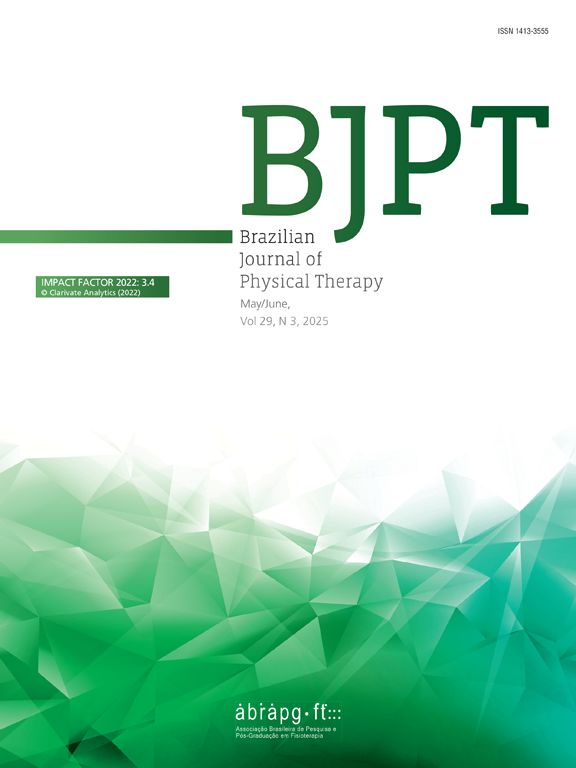
1st STUDENT SCIENTIFIC CONFERENCE OF THE BRAZILIAN ASSOCIATION FOR RESEARCH AND POSTGRADUATE IN PHYSIOTHERAPY (ABRAPG-FT)
Mais dadosPatellofemoral pain (PFP) is defined as retro- or peripatellar pain, exacerbated by activities that overload the patellofemoral joint. PFP is one of the most common musculoskeletal disorders of the lower limbs and is associated with several clinical alterations (e.g., reduced subjective function, quality of life and knee muscle strength). The development of PFP is commonly associated with an insidious onset. However, recent evidence demonstrates a high prevalence of PFP after traumas to the knee joint (e.g., injuries and/or surgery). Seven out of 10 individuals report symptoms of PFP after traumas to the knee. Nevertheless, most studies are carried out in individuals with insidious PFP, whereas little is known about which alterations may be present in individuals with PFP of traumatic origin; and even if they are the same as those presented by individuals with insidious PFP.
ObjectiveTo compare clinical features of individuals with traumatic, insidious PFP and asymptomatic individuals with or without a history of knee trauma.
MethodsThirty-nine subjects with traumatic PFP, 38 subjects with insidious PFP, 40 asymptomatic subjects with no history of trauma, and 18 asymptomatic subjects with a history of trauma aged 18 to 35 years were enrolled (Ethics Committee Number: 5,110,075). Variables of interest included duration of symptoms, worst level of pain in the last month (VAS), subjective function (AKPS), quality of life (SF-36), and maximum isometric strength of knee extensors and flexors (isokinetic dynamometer) at 60° of knee flexion. A multivariate analysis of covariance (ANCOVA) was used to compare the groups, controlling for the influence of sex on the dependent variables.
ResultsThe traumatic PFP group had worse pain levels (95%CI=.65; 18.92) and lower levels of subjective function (95%CI=-12.01; -4.17) compared to the insidious PFP group. The groups with traumatic and insidious PFP had lower subjective function compared to the asymptomatic groups with (95%CI=-27.65; -19.62 | -19.84; -11.23) and without trauma (95%CI=-26. 37; -15.52 | -18.49; -7.21), respectively. The traumatic PFP group had lower knee extensor strength compared to the asymptomatic group with trauma (95%CI=-67.26; -3.02) and without trauma (95%CI=-52.76; -3.59) in the knee, while there was a trend towards the insidious PFP group (95%CI=-51.25; .67). There were no differences between groups for duration of symptoms, quality of life, and isometric knee flexor strength.
ConclusionIndividuals with traumatic PFP have a worse perception of their clinical condition (e.g., worse level of pain and subjective function) compared to individuals with insidious PFP, and lower strength of the knee extensors when compared to asymptomatic individuals with and without a history of trauma to the knee. In general, these findings may indicate a cumulative effect of knee trauma and PFP, which could affect the individual's perception of their condition.
ImplicationsIt is possible that individuals with traumatic PFP could benefit from specialized education interventions regarding the perception of their condition, whereas there does not seem to be necessary to give greater emphasis to knee strengthening for this subgroup.
Conflict of interest: The authors declare no conflict of interest.
Acknowledgments: I would like to thank the support foundation: Coordination for the Improvement of Higher Education Personnel (CAPES) - Proposal 5922 -. That made the realization and submission of this work possible.
Ethics committee approval: University of Science and Technology - UNESP (Ethics Committee Number: 5.110.075).




